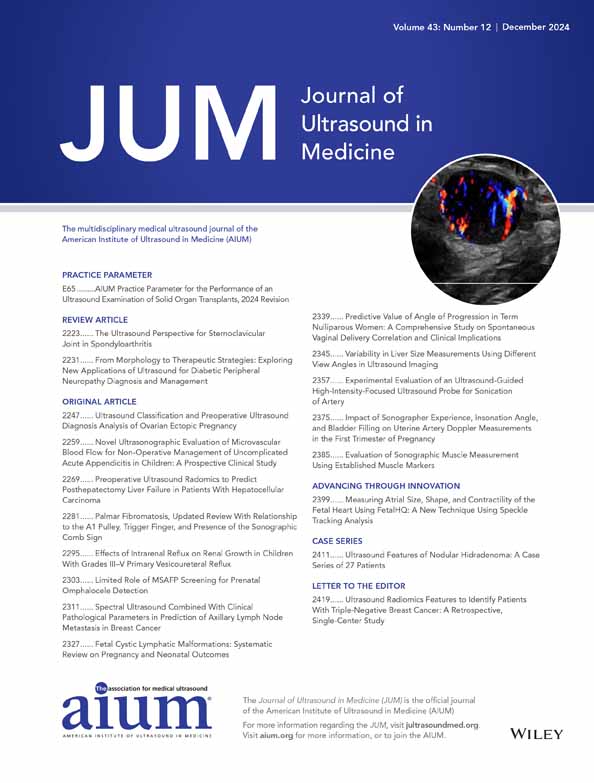Preoperative Ultrasound Radomics to Predict Posthepatectomy Liver Failure in Patients With Hepatocellular Carcinoma
Liyun Xue, Juncheng Zhu, and Yan Fang contributed equally to this study and shared first authorship.
Jinhua Yu, Jia Guo, and Hong Ding contributed equally to this study and shared corresponding authorship.
This study was supported by the National Natural Science Foundation of China (91959127, 81873897, 82202185, 82102050), the Funding of Shanghai Municipal Health Commission (202140378), Shanghai Science and Technology Development Foundation (22Y11911500), and Science and Technology Commission of Shanghai Municipality (2018SHZDZX01).
The authors of this manuscript declare no conflict of interest.
Abstract
Purpose
Posthepatectomy liver failure (PHLF) is a major cause of postoperative mortality in hepatocellular carcinoma (HCC) patients. The study aimed to develop a method based on the two-dimensional shear wave elastography and clinical data to evaluate the risk of PHLF in HCC patients with chronic hepatitis B.
Methods
This multicenter study proposed a deep learning model (PHLF-Net) incorporating dual-modal ultrasound features and clinical indicators to predict the PHLF risk. The datasets were divided into a training cohort, an internal validation cohort, an internal independent testing cohort, and three external independent testing cohorts. Based on ResNet50 pretrained on ImageNet, PHLF-Net used a progressive training strategy with images of varying granularity and incorporated conventional B-mode and elastography images and clinical indicators related to liver reserve function.
Results
In total, 532 HCC patients who underwent hepatectomy at five hospitals were enrolled. PHLF occurred in 147 patients (27.6%, 147/532). The PHLF-Net combining dual-modal ultrasound and clinical indicators demonstrated high effectiveness for predicting PHLF, with AUCs of 0.957 and 0.923 in the internal validation and testing sets, and AUCs of 0.950, 0.860, and 1.000 in the other three independent external testing sets. The performance of PHLF-Net outperformed models of single- and dual-modal US.
Conclusions
Preoperative ultrasound imaging combining clinical indicators can effectively predict the PHLF probability in patients with HCC. In the internal and external validation sets, PHLF-Net demonstrated its usefulness in predicting PHLF.
Open Research
Data Availability Statement
The data that support the findings of this study are available from the corresponding author upon reasonable request.




